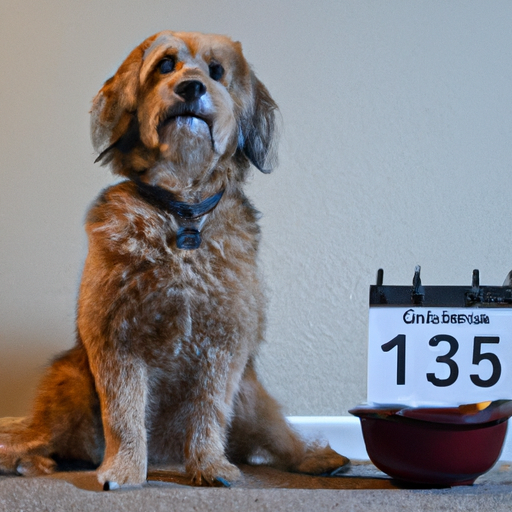Understanding Your Dog’s Nutritional Needs
As a caregiver, you need to understand your dog’s nutritional needs. Just like you, they require a balanced diet to stay healthy. They need a mix of proteins, carbohydrates, fats, vitamins, minerals, and water in their meals. The exact quantities can vary depending on your dog’s breed, age, size, and lifestyle.
For instance, puppies usually require more frequent feedings than adult dogs because their bodies are growing and need more fuel. Similarly, active breeds like Border Collies or Labrador Retrievers may need more food than less active breeds.
- Proteins: Essential for growth and maintenance of the body.
- Carbohydrates: Provide energy and aid in digestion.
- Fats: Essential for skin and coat health, and also a significant energy source.
- Vitamins and Minerals: Necessary for various bodily functions.
- Water: Makes up 60-70% of an adult dog’s body weight.
Frequency of Meals: Puppies vs Adult Dogs
When it comes to meal frequency, the age of your dog plays a significant role.
-
Puppies: They should be fed three to four times a day. This is because they have smaller stomachs and higher energy requirements.
-
Adult dogs: Most adult dogs should eat two meals a day. This is a general rule and can vary based on health, age, and breed.
| Age of dog | Frequency of meals |
|---|---|
| Puppies | 3-4 times a day |
| Adult dogs | 2 times a day |
Factors Affecting Your Dog’s Eating Schedule
Your dog’s eating schedule shouldn’t be designed in isolation. It should take into account factors like:
- Health status: Dogs with certain health conditions might require special feeding schedules.
- Exercise routine: Active dogs may need additional feedings or larger portion sizes.
- Age and breed: As mentioned earlier, a dog’s age and breed significantly impact their nutritional needs.
Creating a Feeding Schedule for Your Dog
Creating a feeding schedule for your dog might seem daunting, but it doesn’t have to be. Here’s a simple step-by-step guide:
- Visit a veterinarian: They can provide a comprehensive dietary plan based on your dog’s age, breed, size, and health status.
- Choose the right food: Based on the vet’s recommendations, choose high-quality dog food.
- Set a schedule: Dogs thrive on routine. Set fixed meal times and stick to them.
Frequently Asked Questions
Q: Can I leave food out all day for my dog?
A: It’s not recommended as it can lead to overeating and obesity.
Q: How much food should I feed my dog?
A: It varies based on size, age, breed, and activity level. Your vet can provide precise amounts.
Q: Is wet food better than dry food for my dog?
A: Both have their pros and cons. Your vet can help determine what’s best for your dog.
Q: Should I feed my dog before or after a walk?
A: It’s usually better to feed your dog after a walk to prevent stomach upset.
Remember, you are your dog’s best advocate when it comes to their health and nutrition. With the right knowledge and attention to their needs, you’ll be well on your way to ensuring they lead a happy and healthy life.



